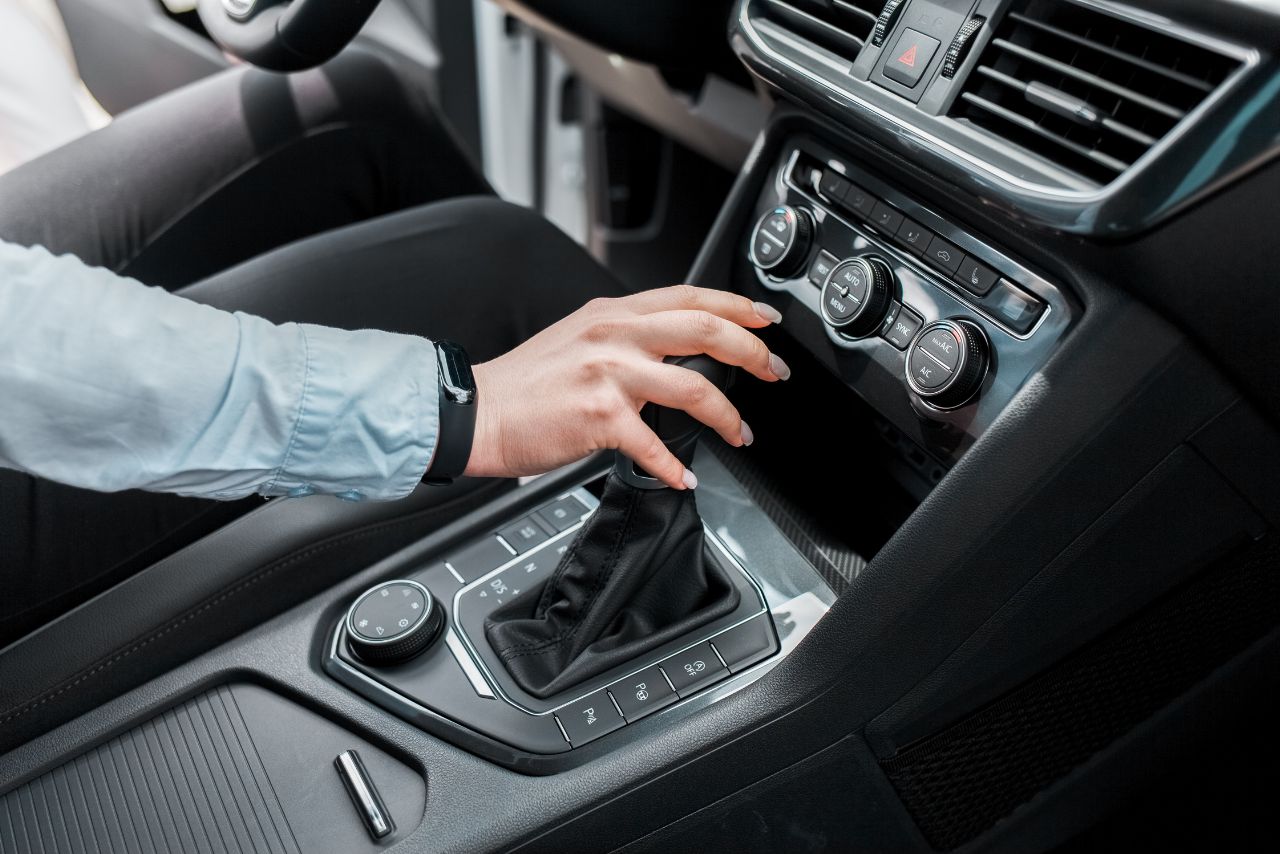Imagine this: You’re ready to hit the road, sitting in your car, excited for the journey ahead. You turn on the ignition, select a gear, and… nothing. Your car refuses to move, no matter what gear you choose.
Frustration sets in as you desperately try to figure out what went wrong. Well, my friend, you’re facing the perplexing issue of a car that won’t move in any gear in an automatic transmission.
This is a problem “Car Won’t Move In Any Gear In Automatic Transmission” that can leave even experienced drivers scratching their heads.
After all, an automatic transmission is supposed to make driving effortless, right? But when your trusty vehicle refuses to budge, it’s time to delve into the mysterious inner workings of your car.
In this article, we’ll take you on a journey to uncover the reasons behind this frustrating dilemma. We’ll explore the possible causes, from minor issues that can be easily fixed, to more serious problems that might require professional intervention.
So buckle up and join us as we dive into the abyss of a car that won’t move in any gear in an automatic transmission.
Your car might not move in any gear in automatic transmission for a few reasons. The most common ones are:
Low transmission fluid level: Transmission fluid lubricates the gears and helps them to engage properly. Damaged or worn transmission fluid: Transmission fluid can also become damaged or worn over time. Faulty transmission control unit (TCU): TCU is the computer that controls the transmission. Damaged or worn transmission bands or clutches: Transmission bands and clutches are responsible for engaging the gears.
Table of contents
Causes Of Car Won’t Move In Any Gear In Automatic Transmission:
| Cause | Description |
|---|---|
| Low transmission fluid level | Transmission fluid lubricates the gears and helps them to engage properly. If the fluid level is low, the gears will not be able to move and the car will not move. |
| Damaged or worn transmission fluid | Transmission fluid can also become damaged or worn over time. This can cause the gears to slip and the car to not move. |
| Faulty transmission control unit (TCU) | TCU is the computer that controls the transmission. If the TCU is faulty, it can prevent the transmission from shifting gears and the car will not move. |
| Damaged or worn transmission bands or clutches | Transmission bands and clutches are responsible for engaging the gears. If they are damaged or worn, they will not be able to engage the gears and the car will not move. |
| Seized or damaged transmission shifter | The transmission shifter is the mechanism that allows you to select the different gears. If the shifter is seized or damaged, it will not be able to engage the gears and the car will not move. |
| Faulty shift solenoids | The shift solenoids are responsible for sending signals to the TCU to shift gears. If the shift solenoids are faulty, they will not be able to send the signals to the TCU and the car will not move. |
| Transmission damage | In some cases, the transmission itself may be damaged. This can happen due to a number of factors, such as a collision, overheating, or driving with low transmission fluid. If the transmission is damaged, it will not be able to shift gears and the car will not move. |
1. Lack of Transmission Fluid:

One of the most common reasons why a car won’t move in any gear in an automatic transmission is due to a lack of transmission fluid.
The transmission fluid plays a crucial role in providing lubrication, cooling, and hydraulic pressure within the transmission system.
Here are some key points to understand about this issue:
- Resolving Low Fluid Issue: If you find that your car has insufficient fluid levels:
- Top up using manufacturer-recommended automatic transmission fluid (ATF) following proper specifications.
- Be cautious not to overfill as excessive ATF can have adverse effects on performance.
- If you suspect leakage or other issues causing frequent low fluid levels, consult an experienced mechanic for inspection and repair.
| Reasons Car Won’t Move in Any Gear (Automatic Transmission) |
|---|
| 1. Lack of Transmission Fluid |
| 2. Clogged Transmission Filter |
| 3. Bad Shift Solenoid or Valve Body |
| 4. Failed Torque Converter |
| 5. Worn-Out Clutches |
| 6. Bad Gear Position Sensor or Shifter |
| 7. Defective Transmission Control Unit |
2. Damaged or worn transmission fluid:
In an automatic transmission, a car’s inability to move in any gear is often indicative of damaged or worn transmission fluid.
Over time, the fluid can deteriorate, losing its ability to effectively lubricate and cool the transmission components. This can result in the gears slipping, making it difficult for the car to engage and move forward.
It is crucial to regularly check and maintain the transmission fluid levels as well as replace it at the recommended intervals.
Neglecting this essential maintenance can lead to costly repairs and potentially render the vehicle immobile.
Therefore, it is important to address this issue promptly by consulting a professional mechanic or servicing the transmission fluid oneself to ensure the smooth operation and longevity of the vehicle.
3. Clogged Transmission Filter:
A clogged transmission filter can cause a car to not move in any gear when equipped with an automatic transmission.
The filter is responsible for removing dirt, debris, and other contaminants from the transmission fluid, ensuring its smooth flow through the system.
When the filter becomes clogged, it restricts the flow of fluid, leading to various problems that prevent the car from moving. Here are some key points about a clogged transmission filter:
Remember, addressing a clogged transmission filter promptly can save you from costly repairs in the long run while ensuring smooth gear shifts and overall vehicle performance.
4. Bad Shift Solenoid or Valve Body:

When your car won’t move in any gear, one possible culprit could be a bad shift solenoid or valve body.
These components play a crucial role in the smooth operation of an automatic transmission. Here’s what you need to know:
- What is a Shift Solenoid?
- A shift solenoid is an electromagnetic valve responsible for controlling the flow of transmission fluid within the valve body.
- It determines when and how gears should be engaged or disengaged based on input from various sensors.
- How Does it Affect Movement?
- If a shift solenoid becomes faulty or fails completely, it can disrupt the normal functioning of your transmission system.
- When this happens, the transmission may not receive the proper signals to engage specific gears required for movement.
- Symptoms of a Bad Shift Solenoid:
- Delayed engagement: You may experience delays when shifting into drive or reverse.
- Erratic shifting: The vehicle might exhibit abrupt shifts between gears or fail to upshift/downshift smoothly.
- Stuck in one gear: Your car may get stuck in either first gear (limp mode) or another specific gear without shifting.
- Valve Body Issues:
- The valve body houses multiple valves and passages that direct hydraulic pressure to control different functions within the transmission system.
- Contamination, wear and tear, or mechanical failures can affect its ability to regulate fluid flow properly.
- Diagnosis and Repair:
- Professional diagnosis using specialized tools like diagnostic scanners will help identify whether there’s an issue with the shift solenoids/valve body.
- Depending on the problem detected, repairs could range from replacing individual solenoids to overhauling/replacing the entire valve body assembly.
5. Failed Torque Converter:
When a car won’t move in any gear, one possible cause could be a failed torque converter.
The torque converter is an essential component of the automatic transmission system that transfers power from the engine to the transmission.
Here are some key points about a failed torque converter:
It’s important not to ignore signs of a failing torque converter since continued driving with this issue can lead to further damage and potentially more expensive repairs down the line.
6. Worn-Out Clutches:

One of the potential reasons why a car won’t move in any gear in an automatic transmission is due to worn-out clutches.
The clutches play a crucial role in transmitting power from the engine to the wheels, allowing your vehicle to move smoothly.
Here are some key points about worn-out clutches:
- Function of Clutches: In an automatic transmission system, clutches are used for engaging and disengaging gears without manual intervention. They consist of friction plates that connect and disconnect different components within the gearbox.
- Wear and Tear: Over time, continuous usage can lead to wear and tear of these friction plates. As they deteriorate, their ability to transfer power efficiently diminishes significantly.
- Symptoms: A clear indicator of worn-out clutches is when you put your car into gear but it fails to engage or move forward effectively. You may experience slipping gears or RPMs increasing without acceleration.
- Causes: Several factors contribute to clutch wear including aggressive driving habits such as sudden accelerations or excessive braking, towing heavy loads beyond recommended capacity, or prolonged stop-and-go traffic conditions.
- Maintenance: Regular maintenance can help prolong the lifespan of your clutches by ensuring proper fluid levels and addressing any leaks promptly.
- Repair Options: If you suspect worn-out clutches as the cause behind your car’s inability to move in any gear, it’s advisable to consult with a professional mechanic who specializes in transmissions repair/rebuild services.
- Replacement Cost: Depending on the severity of clutch damage and specific model requirements, replacement costs can vary substantially—ranging from hundreds up into thousands of dollars inclusive of labor charges.
Dealing with worn-out clutches requires prompt attention as neglecting this issue could potentially lead to further damage within the transmission system itself.
7. Bad Gear Position Sensor or Shifter:
A bad gear position sensor or shifter can also cause a car to not move in any gear with an automatic transmission.
The gear position sensor is responsible for detecting the selected gear and sending signals to the transmission control unit (TCU). The TCU uses this information to determine when and how to shift gears.
Here are some key points about how a faulty gear position sensor or shifter can affect your car’s ability to move:
If you suspect that your car’s bad performance is due to issues with its gear position sensor or shifter, it’s crucial to have it inspected by a qualified mechanic who specializes in transmissions repairs as soon as possible.
Conclusion and final thoughts 💭
If your car won’t move in any gear with an automatic transmission, there are several potential reasons to consider.
Firstly, a lack of transmission fluid can cause the gears to fail and result in no movement. Secondly, a clogged transmission filter can lead to restricted flow of fluid and prevent the car from shifting properly.
Additionally, a faulty shift solenoid or valve body may disrupt the smooth operation of the transmission.
A failed torque converter can also impede movement as it connects the engine’s power to the transmission. Worn-out clutches within the system could be another culprit behind this issue.
Furthermore, a malfunctioning gear position sensor or shifter might hinder proper gear engagement. Lastly, a defective transmission control unit can adversely affect communication between various components and inhibit normal functioning.
Latest Posts:
- Can WD-40 Remove Scratches on Cars? (Hint: Yes, but…)
- Can You Use a Drill to Polish Your Car? (We Tried it Out!)
- Should You Cover Car Scratches With Stickers? (REVEALED!)
- Buick Service Stabilitrak: (Causes & 100% Guaranteed Fix!)
- Common Holden Trax Problems (Causes & 100% Proven Fixes!)
- Jeep Commander Transmission Over Temp: (Guaranteed Fix!)











Leave a Reply